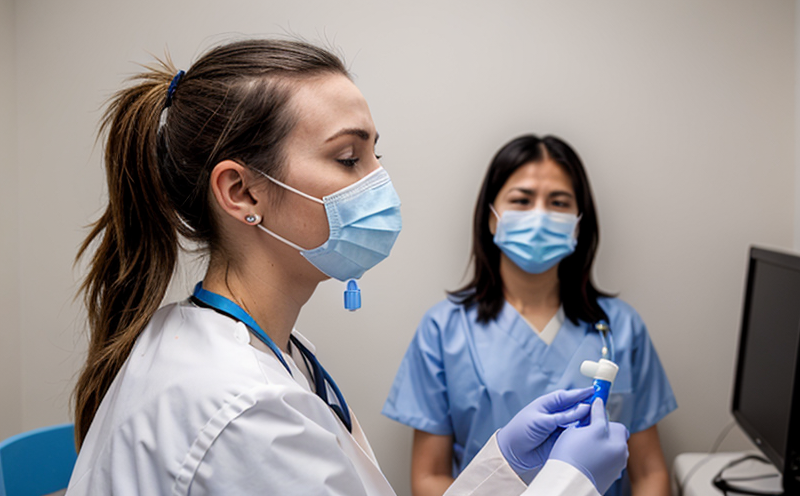Aspergillus fumigatus Respiratory Testing in Poultry Hatcheries
The respiratory health of poultry is crucial for optimal growth, productivity, and overall welfare. Aspergillus fumigatus, a common opportunistic fungal pathogen, poses significant risks to the respiratory tract of hatchlings, leading to severe infections known as aspergillosis or "white disease." This condition can result in high mortality rates and substantial economic losses for poultry farmers.
Respiratory testing aimed at detecting Aspergillus fumigatus is essential in hatcheries to prevent the spread of the fungus. This testing typically involves air sampling, culture-based methods, or molecular diagnostics. Culture-based methods involve collecting samples from the environment and incubating them for fungal growth, while molecular techniques utilize PCR (polymerase chain reaction) to detect specific DNA sequences.
For hatcheries, implementing a robust testing program can significantly enhance biosecurity measures. By identifying Aspergillus fumigatus early in the production cycle, farmers can take preventive actions such as disinfection of incubators and brooders, adjusting ventilation systems, and using antifungal treatments.
The significance of this testing cannot be overstated. Hatcheries are environments where hygiene and sterility are paramount due to the presence of numerous pathogens. Controlling Aspergillus fumigatus ensures that the chicks enter their rearing phases free from significant fungal contamination, thereby reducing the risk of aspergillosis.
Applied Standards:
| Standard | Description |
|---|---|
| ISO 14263-1:2019 | Airborne fungal spores sampling and counting. |
| ASTM E1177-18 | Standard practice for the collection of airborne microorganisms in air using impactor-type samplers. |
The above standards provide guidelines on how to conduct accurate and reliable sampling of fungal spores in the air, which is critical for identifying Aspergillus fumigatus. These methods ensure that testing results are consistent and comparable across different facilities.
Benefits:
Reduces the incidence of aspergillosis in hatchlings, leading to healthier birds.
Minimizes economic losses due to high mortality rates associated with fungal infections.
Improves overall biosecurity by identifying and mitigating environmental contaminants early.
Aids in compliance with regulatory requirements for poultry health standards.
The implementation of respiratory testing also contributes to the sustainable development of the poultry industry, as it promotes more efficient resource use and better animal welfare practices. By addressing Aspergillus fumigatus at its source, hatcheries can enhance their reputation for producing high-quality, healthy chicks.
In conclusion, respiratory testing for Aspergillus fumigatus in poultry hatcheries is a vital aspect of maintaining optimal health and productivity. It supports the broader goals of biosecurity, disease prevention, and sustainable agriculture.
Why It Matters
The respiratory system of hatchlings is highly susceptible to fungal infections due to their immaturity and compromised immune systems. Aspergillus fumigatus, in particular, thrives in warm, humid environments like incubators and brooders, making it a significant threat during the early stages of life for chicks.
The impact of aspergillosis on hatchery operations is profound. It not only affects individual birds but also disrupts entire production cycles. High mortality rates can lead to severe financial losses, including reduced egg-laying capacity and diminished meat quality in subsequent generations. Moreover, the disease poses a challenge for poultry farmers in maintaining consistent product quality and meeting market demands.
Effective testing helps in early detection of Aspergillus fumigatus, allowing hatcheries to implement targeted interventions promptly. This proactive approach enhances biosecurity measures, reduces the risk of cross-contamination, and ensures a safer environment for both chicks and staff. By adhering to international standards such as ISO 14263-1:2019 and ASTM E1177-18, hatcheries can achieve accurate and reliable testing results that are essential for maintaining high health standards.
Applied Standards
| Standard | Description |
|---|---|
| EN ISO 14263:2017 | Sampling of air for the determination of airborne bacteria and fungi. |
| ASTM E2958-19 | Standard guide for identification of aspergillus species by DNA-based methods. |
The use of these standards ensures that testing protocols are consistent and aligned with international best practices. This consistency is crucial in maintaining accurate results, which can inform effective management strategies to combat Aspergillus fumigatus.





